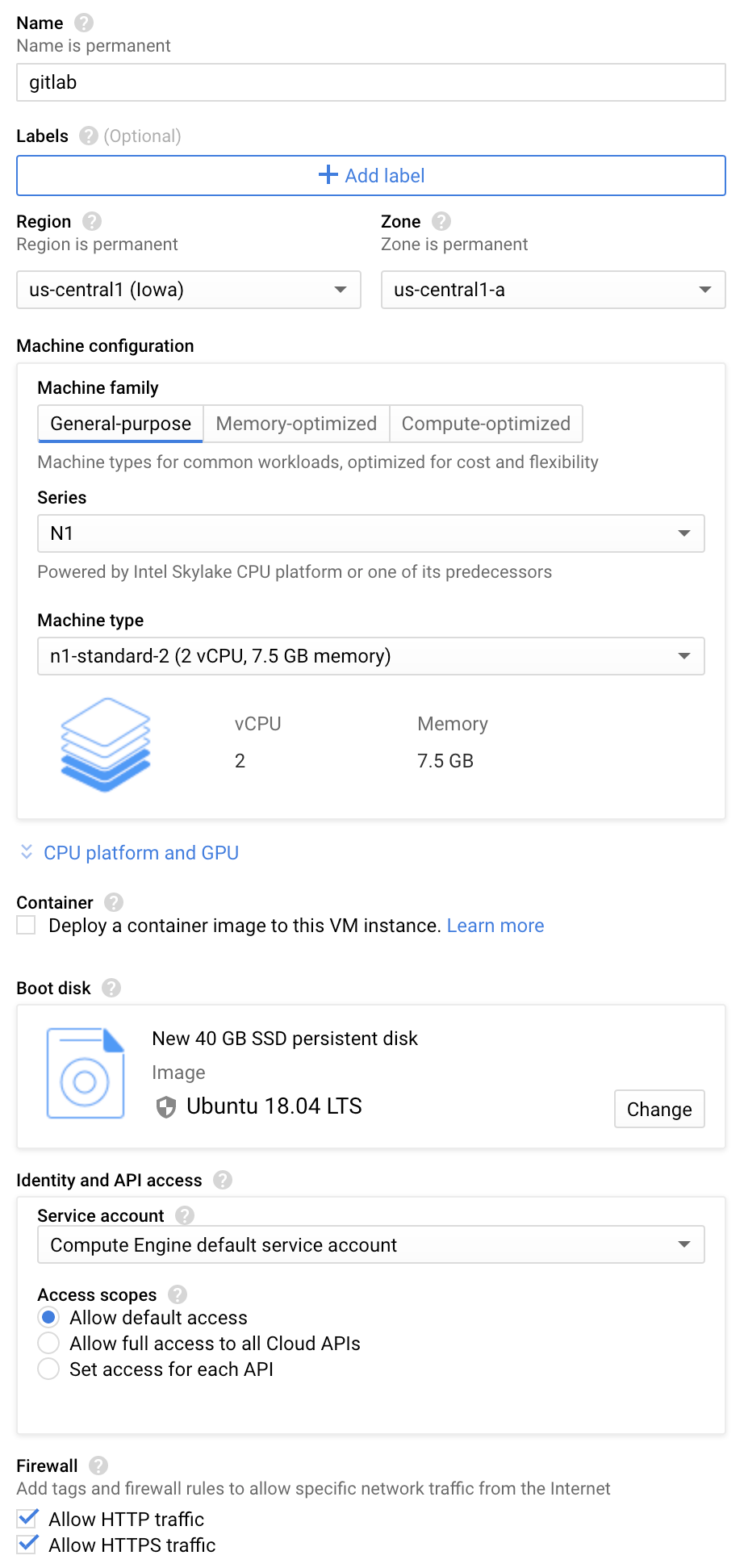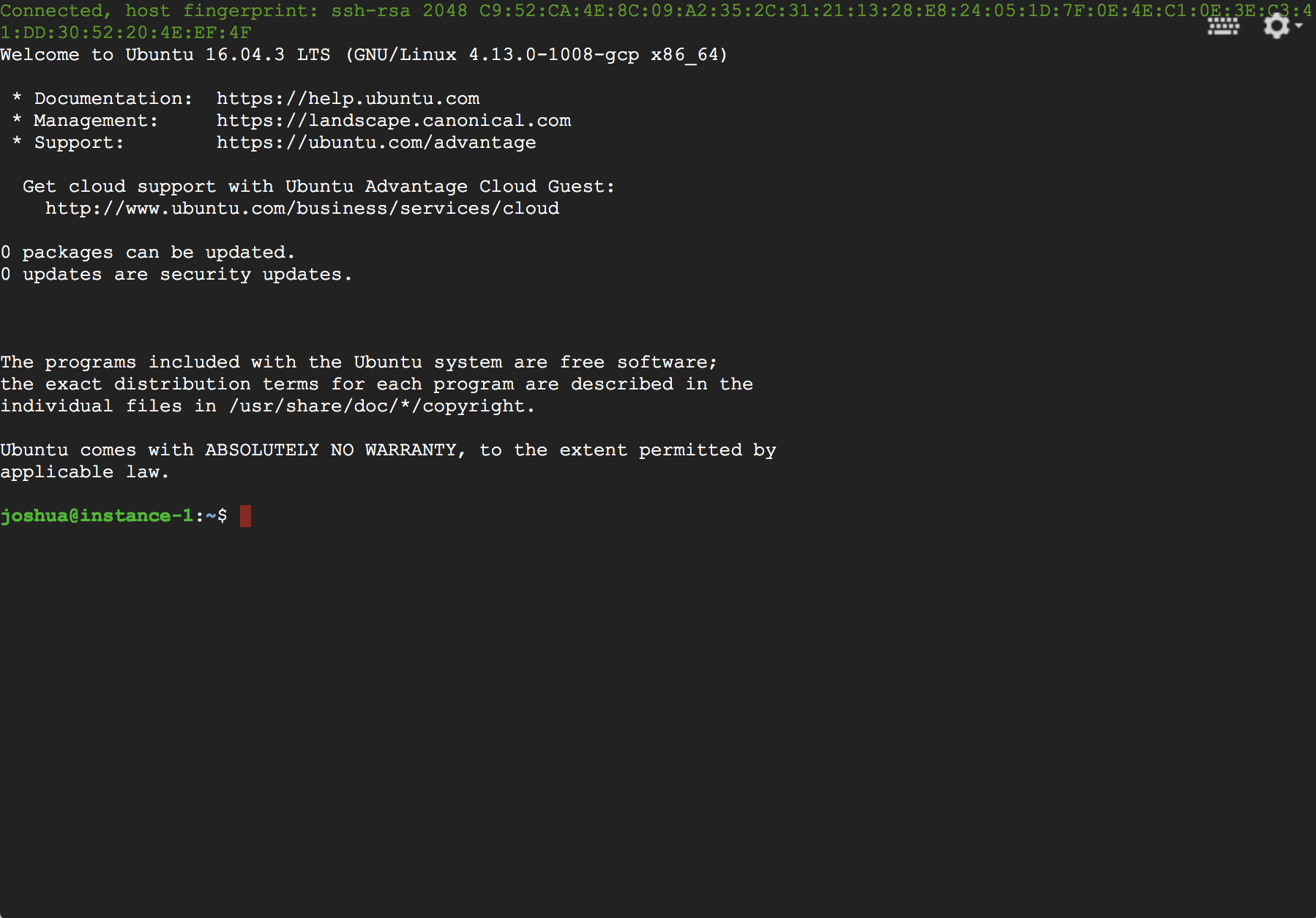Installing GitLab on Google Cloud Platform
This guide will help you install GitLab on a Google Cloud Platform (GCP) instance.
NOTE: Google provides a whitepaper for deploying production-ready GitLab on Google Kubernetes Engine, including all steps and external resource configuration. These are an alternative to using a GCP VM, and use the Cloud native GitLab Helm chart.
Prerequisites
There are only two prerequisites in order to install GitLab on GCP:
- You need to have a Google account.
- You need to sign up for the GCP program. If this is your first time, Google gives you $300 credit for free to consume over a 60-day period.
Once you have performed those two steps, you can create a VM.
Creating the VM
To deploy GitLab on GCP you first need to create a virtual machine:
-
Go to https://console.cloud.google.com/compute/instances and log in with your Google credentials.
-
Click on Create
-
On the next page, you can select the type of VM as well as the estimated costs. Provide the name of the instance, desired datacenter, and machine type. Note our hardware requirements for different user base sizes.
-
To select the size, type, and desired operating system, click Change under
Boot disk. Click Select when finished. -
As a last step allow HTTP and HTTPS traffic, then click Create. The process will finish in a few seconds.
Installing GitLab
After a few seconds, the instance will be created and available to log in. The next step is to install GitLab onto the instance.
-
Make a note of the IP address of the instance, as you will need that in a later step.
-
Click on the SSH button to connect to the instance.
-
A new window will appear, with you logged into the instance.
-
Next, follow the instructions for installing GitLab for the operating system you choose, at https://about.gitlab.com/install/. You can use the IP address from the step above, as the hostname.
-
Congratulations! GitLab is now installed and you can access it via your browser. To finish installation, open the URL in your browser and provide the initial administrator password. The username for this account is
root.
Next steps
These are the most important next steps to take after you installed GitLab for the first time.
Assigning a static IP
By default, Google assigns an ephemeral IP to your instance. It is strongly recommended to assign a static IP if you are going to use GitLab in production and use a domain name as we'll see below.
Read Google's documentation on how to promote an ephemeral IP address.
Using a domain name
Assuming you have a domain name in your possession and you have correctly set up DNS to point to the static IP you configured in the previous step, here's how you configure GitLab to be aware of the change:
-
SSH into the VM. You can easily use the SSH button in the Google console and a new window will pop up.
In the future you might want to set up connecting with an SSH key instead.
-
Edit the configuration file of Omnibus GitLab using your favorite text editor:
sudo vim /etc/gitlab/gitlab.rb -
Set the
external_urlvalue to the domain name you wish GitLab to have withouthttps:external_url 'http://gitlab.example.com'We will set up HTTPS in the next step, no need to do this now.
-
Reconfigure GitLab for the changes to take effect:
sudo gitlab-ctl reconfigure -
You can now visit GitLab using the domain name.
Configuring HTTPS with the domain name
Although not needed, it's strongly recommended to secure GitLab with a TLS certificate. Follow the steps in the Omnibus documentation.
Configuring the email SMTP settings
You need to configure the email SMTP settings correctly otherwise GitLab will not be able to send notification emails, like comments, and password changes. Check the Omnibus documentation how to do so.
Further reading
GitLab can be configured to authenticate with other OAuth providers, LDAP, SAML, Kerberos, etc. Here are some documents you might be interested in reading:





